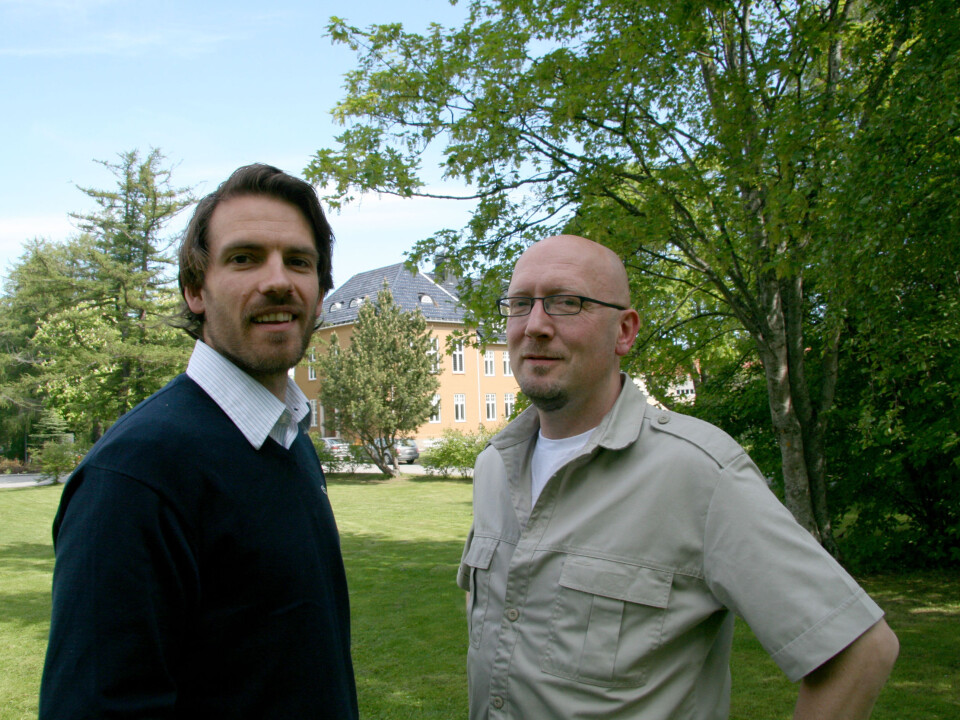An article from Norwegian SciTech News at NTNU

A “lifeline” of flowers and stones
Post-traumatic stress disorder (PTSD) is more treatable than previously thought. A novel and creative method has shown to be remarkably effective in torture survivors.
Denne artikkelen er over ti år gammel og kan inneholde utdatert informasjon.
The method, called Narrative Exposure Therapy (NET), is an intervention aimed at reducing symptoms of post-traumatic stress.
In an on-going Norwegian study, exposure therapy has been used with asylum seekers and refugees who have survived the ordeal of torture.
“According to previous studies, these patients do not benefit from traditional psychological therapy. In our study, however, 60 percent show a marked improvement, and approximately 20 percent show no symptoms of PTSD after treatment,” says Håkon Stenmark, a specialist in clinical psychology.
He is currently a PhD candidate at NTNU’s Department of Neuroscience, and has conducted the study in collaboration with colleague and fellow PhD candidate Joar Øverås Halvorsen.
Describing traumatic events

“Narrative” simply means telling a story. In exposure therapy the patient constructs a narration of his life while focusing on a detailed report of traumatic experiences. In a typical therapy session, the patient is given a rope to symbolize his or her life, from early childhood up to the present date.
The patient then describes the events in his life, good and bad, in chronological order. For every good memory the patient places a flower on the rope, and for every bad memory, a stone.
“I was blindfolded and seated in the prison’s interrogation room. I received multiple blows all over my body, and had no way of anticipating where I would be beaten next, the patient recalls with great difficulty.”
The therapist is sitting at the opposite end of the table, listening attentively. Everything is written down, as it might prove useful later. The written account may be used in an application for asylum, or even as documentation for Amnesty International.
“Electrodes were fastened to my toes, and I was told I would be given electric shocks. The next thing I knew, a skinny man with a cigarette in his mouth turned the nob. The pain was excruciating, and my whole body tensed up.”
“This is just one example. Although the patients are of different nationalities, and have been subjected to different kinds of torture, they share similar stories,” Stenmark says.
Flashbacks and learning problems
Torture can result in a range of symptoms, depending on the method of torture as well as the duration of the ordeal. Nonetheless, symptoms typically fall into three main categories: ‘Reliving’ the event, avoidance and arousal.
“A patients who is reliving torture may have flashbacks of the event, or episodes of repeated nightmares. Avoidance reactions are typically displayed as an extreme fear of the police or anybody who might resemble the abuser. People with these symptoms will try to isolate themselves and avoid people in general. Symptoms of arousal may result in difficulties concentrating, irritability, or having trouble falling or staying asleep,” Stenmark explains.
The classic symptom of PTSD is an inability to concentrate. As a consequence, sufferers often have learning difficulties and end up losing their jobs.
The brain’s “alarm system”
Existing trials are showing promising results with regards to exposure therapy. But why the method works in the first place, and the exact mechanisms behind it, have yet to be verified.
The most prominent theory is that exposure therapy changes the way fear is ‘wired’ in the memory. Simply stated, there is a part of the brain known as the brain’s ‘alarm system’, which enables us to respond to dangerous stimuli.
“During therapy the patient describes the traumatic event in a safe setting, while re-experiencing his or her emotions. In the process, the patient learns that the memories themselves are not dangerous. The event was threatening when it occurred, but the memory the patient has today is not,” Stenmark explains.
The goal of exposure therapy is to reduce the overall symptoms of PTSD, thereby increasing levels of functioning. Stenmark stresses that this is especially important for asylum seekers and refugees, as they often face additional challenges in Norwegian society.
Narrative exposure therapy was developed by trauma specialists working in refugee camps in Africa and Asia. To date, exposure therapy is not widely used in other parts of the world, which makes Øverås Halvorsen and Stenmark’s study the largest of its kind in the western world.

































